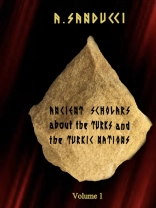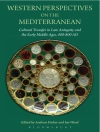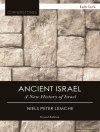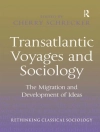All the proceeds from this book will be given to charity.
Primarily based on the genetic findings, backed by the archeological, historical, linguistic facts and testimonies of the ancient scholars, historians, and geographers, this work brings a fresh perspective into a stagnated view of the Turkic nations and their past. This book has 2 volumes.
The first volume reveals breaking new evidence about the biblical origins of the Turkic nations who were related to the ancient Akkadians, Sumerians. The book unshrouds the Turkic pedigree of the Germanic nations, the natives of Media, and the Scythians. The deciphered cuneiforms of the Behistun inscription in Persia, along with their detailed lexico-grammatical analysis shed light on the revolutionary facts about the Turkic origin of the Medes and their language.
A large portion of this volume is devoted to the Scythians and most of their derivative tribes, including those located in Scythia and beyond, such as the As, Turkai, Sacai, Parthians, Bactrians, Huns, Sarmats, Getai, Celtic, Iberian, Gallic, Germanic, and Thracian tribes.
The second volume casts light on the remaining Scytho-Thracian nations – the Trojans with a detailed classification of the related tribes, including the most renowned Illyrians, Spartans, Phrygians, Etruscans, Pelasgi. The in-depth lexico-grammatical analyses of the languages of two major Thracian nations – Etruscans and Phrygians ascertain their Turkic origin. The book also demystifies the history of the ancient Armenians who were a Phrygian colony, sets them apart from the modern Armenians, and gives a chronological, historical account of the modern Armenian people, also known as the Hai, under the authority of their first historian Movses Khorenatsi.
The comparative analysis of 20 ancient alphabets reveals their common Turkic root. A crucial archeological, cultural, political, linguistic, and genetic evidence points to the Turkic beginning of many Native Americans.
表中的内容
TABLE OF CONTENTS.
Preface.
The Turkic Alphabet.
VOLUME 1.
Chapter I.
§1. The biblical origins of the Turkic nations.
§2. The ancient Turkic nation of Az and the biblical land of Uz.
§3. The biblical Tyrians and the Medes are the ancient Turks.
§4. The Turkic origin of the biblical Hittites, the Kheta, the Khitai of Central Asia and China.
§5. The Akkadians, the Sumerians, the Susians, the Kassites, the Caanites – the Turkic nations of biblical proportions.
§6. The biblical Philistines’ ties to the Turkic nations.
CHAPTER II.
§1. The Turkic pedigree of the Arian nations.
§2. The Turkic origin of Odin – the god of all gods.
§3. Troy, the same as Asgard – the ancient land of the Turks.
§4. The Turkic nations – Az, Asir, Azeri, and Azerbaijanis.
§5. The striking similarities between the Germanic and Turkic peoples.
CHAPTER III.
§1. The Tatars and the Mongols are closely related to each other Turkic nations.
§2. The genetic research that established the Turkic forefather of a billion humans worldwide.
CHAPTER IV.
§1. The Medes and Media.
§2. The Turkic names of the Median cities with the capital of Media – Akbatana.
§3. The nations and tribes of Media.
§4. The Turkic names of the Medes.
§5. The Median language of Turkic origin – the analysis based on the Behistun inscription.
§6. 65 grammatical pointers, attesting that Median was a Turkic language.
CHAPTER V.
§1. The Scythians and Scythian tribes.
§2. The primary Scythian tribes, located in Scythia.
§3. The As tribe and its derivatives.
§4. The Sacai and their derivative tribes.
§5. The Parthians, the Bactrians, and their subsidiary tribes.
§6. The Huns, aka the Khounoi.
§7. The Sarmatai and the Sarmatian tribes, including the Turcae.
§8. The Getai family.
§9. The Celts, the Gauls, the Iberians, and the Germanic tribes.
§9-1. The Celtic, the Iberian, the Kelto-Scythian tribes and nations.
§9-2. The Gauls, aka the Galliae, aka the Galli.
§9-3. The Germanic tribes.
§10. The Thracians.
关于作者
A few words about the researcher.Having an extensive academic background in Turkic Studies, a former visiting professor to UC Berkeley, USA, the author of this 2-volume research and many other educational books and articles, gave speeches and lectures in many prestigious Universities worldwide, including Stanford University and UC Davis.












